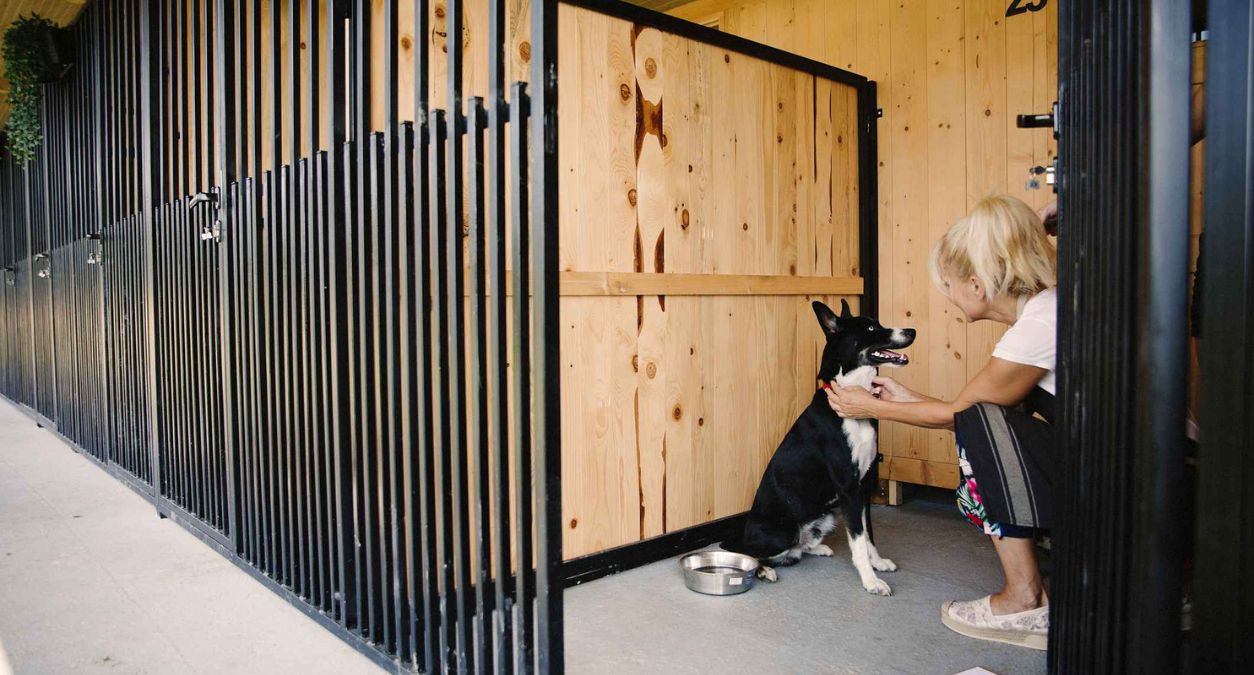Table of contents
Contributors
My main focus is managing the blog and product content for the Protectivity website ensuring everything aligns wi...
Working from home, working for yourself and working with pets are all dreams for many of us. But, what if we told you that you could easily combine all three of these dreams?
By starting an at-home pet business, you can achieve all your life-long goals. But which pet business ideas are viable at the moment and which can you actually start from home? Here, we explain everything you need to know.
5 of the best pet business ideas
Selecting the right business idea can be difficult; particularly if you’ve never started a business before. To help you, here we’ve detailed five of the best pet business ideas you can start from home.
1) Dog walking
Dog walking is the perfect at-home pet business. You don’t need set qualifications to take on this new role and there are very few associated overheads.
Now life has returned to normal after the pandemic, many people need help walking their four-legged friend on days when they’re in the office. This is exactly where you come in.
As a professional dog walker, you’ll be responsible for arranging the best days and times to walk your clients’ dogs, organising walks where the dogs can get enough exercise, and ensuring all the dogs get enough socialisation. You can work from home and set a schedule that suits you.
2) Pet sitting
Pet sitting is another pet business idea that you can start from home. One of the great things about pet sitting is that the services you offer can be as narrow or as flexible as you like. For example, you could only board dogs at your own home on weekends, or you could relocate to a client’s home for a week so the pet can stay in their own surroundings.
Pet sitting is often viewed as a side hustle and many pet sitters only operate on weekends for this reason. But, as a general rule, the more options you can offer pet owners, the more bookings you’ll receive.
3) Pet photography
If you love taking photos and standing behind the camera, then why not start your own pet portrait business? Pets are important family members, and today many people use professional pet portraits for home decorations and for Christmas cards.
On top of this, many businesses also seek out professional pet photographers when they’re creating new marketing materials. Similarly, animal rehoming centres also enlist the help of pet photographers to help increase the chance of adoption.
Demand for pet photographers is high. So, if you have a spare space in the home you can convert into a photography studio, then this may be the right pet business idea for you.
4) Pet training
If you’re patient, have good communication skills and possess a way with animals, then starting your own dog training business could be the most rewarding option out there for you.
While people purchasing puppies often require help with basic obedience, it’s never too late to teach an old dog new tricks. For this reason, many pet training professionals also offer courses to tackle behavioural issues or skills courses that keep active dogs occupied. No matter what type of training you’d like to deliver and who you’d like to help, you can create training courses that suit your skills and expertise. Plus, if you have the space, you can run your new business from home. Alternatively, you can go to a client’s house and deliver a one-on-one session.
5) Pet grooming
Professional groomers help keep pets looking their absolute best. To start your pet grooming business, you’ll need a bit of space. Something like a garage or a small room downstairs in the home is perfect.
As a pet groomer, you’ll be responsible for everything from giving baths to cutting nails and doing haircuts. So, you’ll need access to running water and electricity in your workspace.
Pet grooming can be lucrative; particularly if you become an expert at treating skin conditions or de-matting fur. Thankfully, apprenticeships and college courses are both available to help you train for a pet grooming qualification. So are specialist courses that are run by private organisations. These courses can be completed in as little as a month, so your at-home pet grooming business can start in next to no time.
Things to consider when starting a business
At this stage of the process, you have your pet business idea. But, what else do you need to know and consider? Let’s take a look…
Business insurance
Before you run with any of the above pet business ideas and turn your dreams into reality, you first need to make sure you have the correct Pet Business Insurance in place. This way, you’re covered in case something goes wrong.
Our Pet Business Insurance policy is perfect for the job. This is because it provides cover for up to 14 different pet business activities at no extra cost. Public Liability is included as standard, and you receive a host of other benefits, such as Care, Custody and Control cover.
With a Pet Business Insurance policy from Protectivity, you’ll receive all the following benefits as standard:
- Public Liability: You can choose to include between £1 million and £10 million worth of cover to protect your business against claims arising from property damage or injury to a third party.
- Care, Custody and Control: Up to £100,000 worth of cover is provided (up to £25,000 per animal) in the instance of accidental loss, injury, illness or death of an animal while in your care.
- Non-Negligent Cover: Similar to the Care, Custody and Control benefit, you are also covered for accidental loss, injury, illness or death to an animal in your care during the course of service delivery through no fault of your business.
- Key Cover: You are covered up to £10,000 for new keys and locks, as well as the cost of re-setting intruder alarms and associated call-out costs.
- Equipment Cover: As standard, we provide £250 worth of cover for your equipment against theft, loss and accidental damage. You can increase the protection of your items up to the value of £30,000.
- Close Family Extension: Your close family members are included under your policy as standard. This means that, if you employ your husband, wife, son, daughter or any other close family, you do not need to take out Employers’ Liability
Tax
Once you have sorted your insurance and your business structure, you then need to consider the tax implications of starting a new business. This is particularly important if you’ve never started a business before, or if you’re running your pet business as a side hustle.
If you’re not a tax expert, then we recommend speaking to an accountant about the tax implications of starting a new business. They will provide you with tailored advice based on your employment situation. They will also inform you of any reporting requirements.
Business structure
Leading on from the above, before you register and start your business, you must also think about how you will structure the business. For example, will you be a sole trader, work in a partnership with someone else, form a limited liability partnership or form a limited company?
There are pros and cons to each of these approaches and the right structure for you will depend on factors such as:
- The type of business you’re creating
- Who you’re going into business with (if anyone)
- Your overheads, costs and expenses
- Your personal liability for the business
- Your expected profits
Remember, the structure you choose will have significant implications on the amount of tax you pay, the degree of your personal liability, the amount of administrative work involved and your ability to raise finance. As a result, you should speak to a qualified accountant before you make a decision and ensure you understand the implications and responsibilities of each structure.
Get your Pet Business Insurance
Planning on starting your new pet business? Get a quote for Pet Business Insurance today and ensure you’re fully protected.
Our Pet Business Insurance covers 14 different activities under the same policy. It also covers liability, vets bills and equipment. Getting a quote only takes a couple of minutes and we can arrange instant cover. So, get started online today.
Get Pet Business Insurance from Protectivity
*Disclaimer – This blog has been created as general information and should not be taken as advice. Make sure you have the correct level of insurance for your requirements and always review policy documentation. Information is factually accurate at the time of publishing but may have become out of date.
Last updated by














